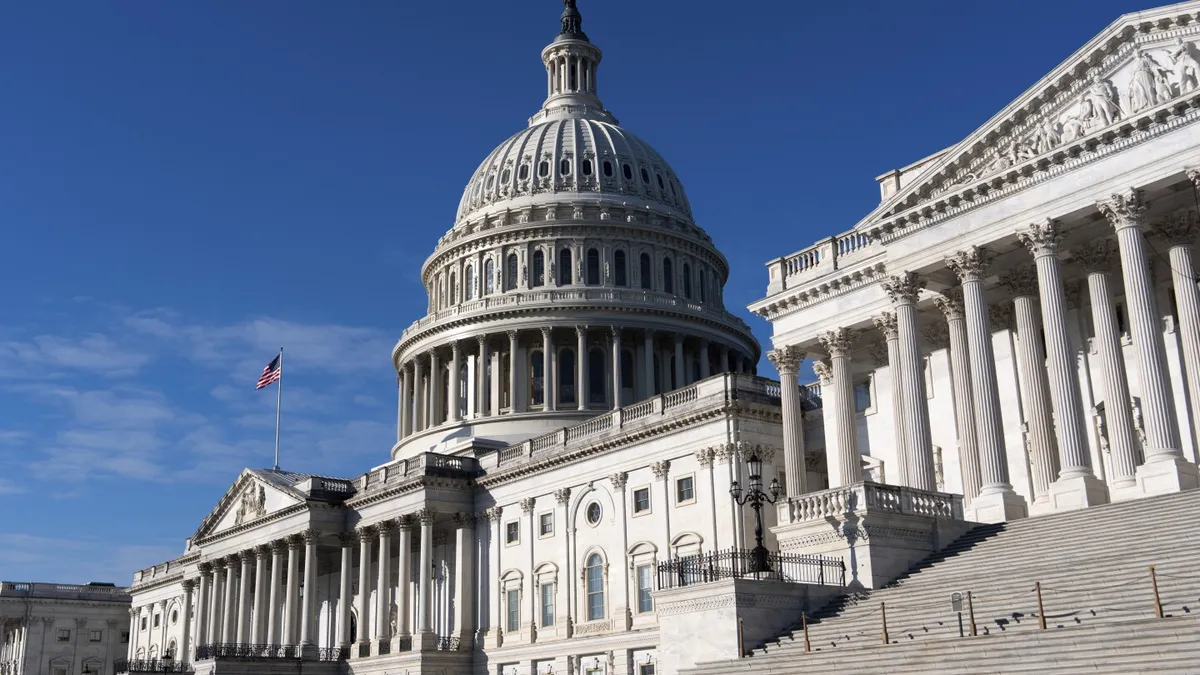
In a highly anticipated event, President Donald Trump is set to address a joint session of Congress on Tuesday, reflecting on his tumultuous first weeks in office. As the nation grapples with division, many Americans express concern for the country's future while others rally behind the president's initiatives. This speech marks another significant moment in Trump's ongoing influence over the nation's capital, where a Republican-led Congress has largely supported his agenda to reduce the size of the federal government and redefine America's role on the global stage.
With a firm grip on the Republican Party, Trump has been emboldened to enact sweeping changes following his experiences with impeachment and various legal challenges. According to the White House, the theme of Trump’s upcoming address will be the "renewal of the American dream." He is anticipated to highlight his accomplishments since returning to the White House and will likely request additional funding from Congress to bolster his hardline immigration policies.
Senior advisor Stephen Miller emphasized the significance of this opportunity for Trump to showcase what he describes as "record-setting, record-breaking, unprecedented achievements." This rhetoric underscores the president's strategy of reinforcing his narrative of success despite the controversies surrounding his administration.
In contrast, many Democrats have opted not to boycott the address, focusing instead on highlighting the consequences of Trump’s policies. They have invited guests who have suffered due to federal budget cuts, including a disabled veteran from Arizona and a health worker from Maryland. Senate Democratic Leader Chuck Schumer criticized Trump’s focus, stating, "Rather than focusing on American families and kitchen table issues, President Trump’s first month in office has focused on tax cuts for billionaires, paid for by the very people he promised to help."
Trump is also expected to address his foreign policy initiatives during the speech, particularly regarding peace efforts in Ukraine and the Middle East. Notably, Trump recently ordered a freeze on U.S. military assistance to Ukraine, a shift from long-standing American support for the country amidst its conflict with Russia. This decision follows a contentious meeting with Ukrainian President Volodymyr Zelenskyy, where Trump sought to encourage peace negotiations.
In the Middle East, Trump’s approach to extending a fragile ceasefire between Israel and Hamas has raised eyebrows, particularly his controversial suggestion of displacing Palestinian civilians in Gaza. This stance could jeopardize longstanding U.S. support for the two-state solution in the Israel-Palestinian conflict.
The president's address will also unfold against a backdrop of economic uncertainty, exacerbated by new tariffs on imports from Canada and Mexico. A significant 25% tax on these goods has taken effect, ostensibly aimed at enhancing cooperation in combating fentanyl trafficking. However, this move has incited immediate retaliation from neighboring countries and heightened fears of a potential trade war. Additionally, Trump has increased tariffs on Chinese goods to 20%, further complicating the economic landscape.
The scene for Trump’s upcoming address starkly contrasts with his final State of the Union speech in 2020, which occurred shortly after his acquittal in his first impeachment trial. It is essential to note that Tuesday’s address is not designated as a State of the Union, as Trump remains in the first year of his new term.
During the address, Trump plans to advocate for changes in social policy, aiming to eliminate diversity, equity, and inclusion initiatives while rolling back certain protections for transgender individuals. First Lady Melania Trump will be present, having recently hosted her first solo event since her husband's return to power. Her advocacy focuses on legislation to combat revenge porn, highlighting the plight of victims like 15-year-old Elliston Berry, who experienced harassment through deepfake technology.
Outside the halls of Congress, public sentiment is manifesting through protests against Trump’s administration. Various groups are organizing demonstrations across all 50 states and the District of Columbia, coordinated to coincide with the president’s address. These protests reflect the ongoing division and contention surrounding Trump’s policies and the direction in which he aims to lead the country.